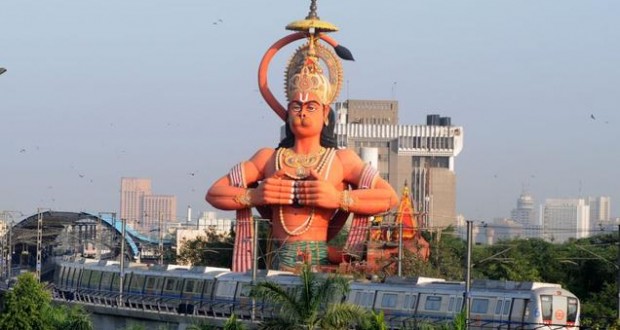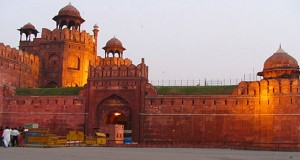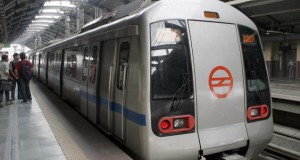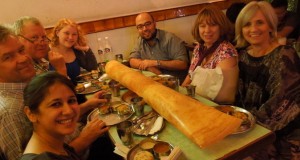Review Overview
2
Summary : Delhi is most pleasant and green in October-November and February-March.
If you arrive in early January, don’t expect warm tropical sun: it can be as cold here as in London. The popular season here may be October to March, but it gets decidedly chilly in December and January. Delhi is most pleasant and green in October-November and February-March. A popular attraction is Republic Day (26 January), celebrated here as nowhere else, with a whole week of festivals, dance performances, massed bands and ceremonial displays.
The highlight is the military parade on the day itself along the length of Rajpath and on to Connaught Place and the Red Fort. In October, the emphasis shifts from a military to a cultural show of strength, the big Dussehra festival coinciding with plays, classical dance, music recitals and readings of epic poems. The festival to avoid is Holi (March), when unwary tourists, along with everybody else, are pelted with coloured powder, water and even paint.
Another time to avoid is late May and June when the temperature soars and power-cuts become more frequent. The fierce white heat of a June afternoon, when the temperature can reach 46°C, is only partly redeemed by the widely available fresh lime and soda or a cold beer.
ARRIVAL/DEPARTURE Air Delhi’s Indira Gandhi International Airport now has two separate terminals. The international terminal (Terminal I, tel 5452011) is 22 km (13 miles) from Connaught Place, and is a newer, more efficient airport used only for international flights. The domestic terminal (Terminal II, tel 5483535, 3295121) at Palam, 17 km from Connaught Place, is exclusively for the use of Indian Airlines, Vayudoot flights and the new private domestic airlines and charter operators such as East West Airlines.Both airports have retiring rest rooms (handy if your plane is delayed/cancelled), and desks for air/rail/hotel bookings.
Delhi is well connected by International carriers including Air India. Delhi airport is fairly efficent although it can take up to an hour for baggage to arrive on the conveyor belts as all incoming suitcases are X-rayed. It is therefore wise to carry film and computer disks in your hand luggage. You can use the time between waiting for your checked bags and clearing immigration, which usually takes about 40 minutes, by changing money at the bank in the arrivals hall. At the bank insist on some small denomination notes (Rs5, 10 and 20). These are useful for tipping porters, and taxis often never have enough change.
The three cheapest forms of airport to city transport are a) air-con ‘Fly Bus’ service (Rs20, drops at major hotels and Connaught Place, returns to airport from Madras Hotel, Radial Rd 2, Connaught Place); b) non air-con EATS bus service (Rs17, drops at major hotels, returns to airport from Maihotra Building, next to Indian Airlines and opposite Palika Bazaar, Connaught Place); c) Delhi Transport Corporation bus service (Rs30, goes to New Delhi and Interstate Bus Stand, returns to airport from Super Bazaar, Connaught Place). For the first-time visitor the pre-paid taxi service (more expensive, around Rs6 per km) may be the easiest way of getting out of the airport. However you travel, the trip from airport to city centre takes around 30 minutes.
Rail Trains run from Delhi to all major tourist destinations—sometimes, as with Agra (Shatabdi Express, Taj Express) and Jaipur (Pink City Express), they can work out even quicker than air travel. There are two main rail stations: Old Delhi station, in the heart of the old city, and New Delhi station, just north of Connaught Place on Chelmsford Road. Rail reservations are now relatively quick and easy to obtain from the special tourist counter on the 1st floor of New Delhi Station. It’s air-conditioned, fully computerised, and you can—if you have an Handrail Pass (also sold here)—book your rail itinerary weeks ahead. However, many travellers report long queues. To tap the tourist quota, apply to the Railway Tourist Guide. He’s at the counter between 10 am and 5 pm (except Sunday), and has tickets for every train out of Delhi.
Bus Most long-distance buses (to Haryana, Himachal Pradesh, Jammu & Kashmir, Uttar Pradesh) leave from the Interstate Bus Terminal (ISBT) at Kashmiri Gate, north of Old Delhi rail station. Popular destinations are Agra, Jaipur, Dharmsala, Jammu (for Srinagar) and Chandigarh (for Shimla). Deluxe state buses to Rajasthan leave from Bikaner House, near India Gate. Deluxe buses to Himachal Pradesh leave from outside Chandralok Building in Janpath. Seats on most of these services can be booked in advance.
GETTING AROUND Orientation in New Delhi is fairly easy: most roads are well- signed, and street names are uniform (no confusing post-Independence duplications). Budget travellers collect in three major ‘pockets’: in and around the central-city hub of Connaught Circus (for airline offices, tourist offices, banks, travel agents, cheap hotels and better restaurants); in the Paharganj area 2 km ( 1/3 miles) north of Connaught Place (for New Delhi rail station and more budget accommodation); and in places like Tourist Camp in the old city (for Old Delhi rail station, Red Fort and the bazaars). A fourth pocket, reserved for the rich and influential, is round Lutyens’ imperial complex and the new post-Independence colonies of south Delhi where most of the five-star hotels are along with the smarter residential and shopping areas.
In New Delhi, you can hire taxis, auto-rickshaws and local buses. In Old Delhi, there are also cycle-rickshaws. The latter are slow, but open and airy, and you can get right across town (e.g. from Paharganj down to the YMCA, Jaisingh Rd) for Rs8-10. Expect to pay twice this for auto-rickshaws, but at least they don’t get lost so often. If you’re in a hurry, and simply can’t afford to get lost, always take a taxi. Don’t go anywhere until you’ve either agreed a fair price, or (better) have persuaded your driver to use his meter. Theoretically, you can report him to the police forovercharging, but hardly any travellers have time for that. The threat is usually sufficient. Meters should be flagged down before setting off, and should read Rs5.60 (for taxis) and Rs3 (for auto-rickshaws). This covers you for the first 2 km. A surcharge of 12.5% is payable on the final meter reading, in respect of recent fuel-price increases. Up-to-date tariffs are obtainable from the police booth opposite the Government of India tourist office. One warning: every rickshaw and taxi driver in Delhi will want to buy your duty-free whisky, foreign currency, Walkman, watch, or camera. Some of them are police informers. The local bus service has improved but buses are not recommended before about 10 am or after 4 pm when they become impossibly crowded





